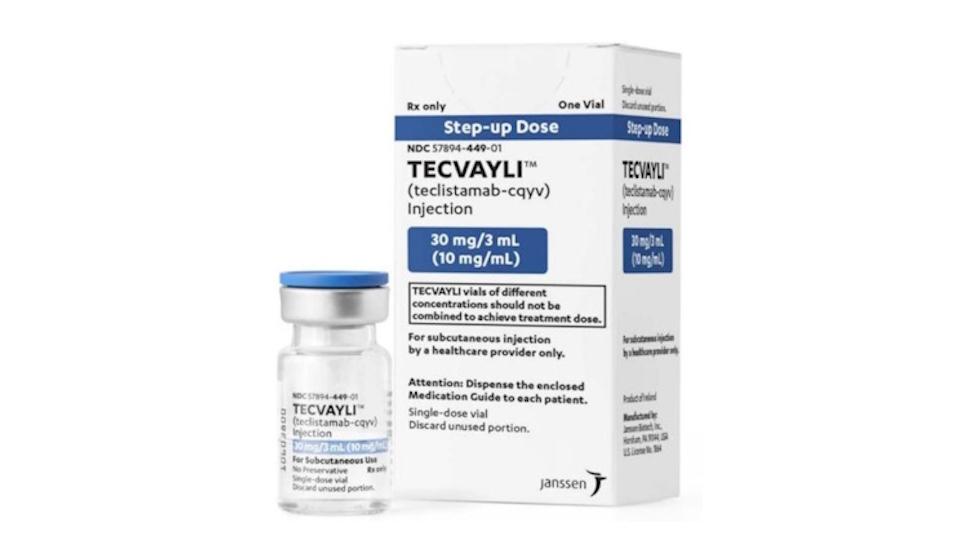J&J says two drugs are better than one in pretreated myeloma

Johnson & Johnson has new data showing that combining two of its multiple myeloma therapies – Talvey and Tecvayli – has been shown to treat an aggressive form of multiple myeloma in a phase 2 trial.
The RedirecTT-1 study is investigating the use of GPRC5D-directed bispecific antibody Talvey (talquetamab) with BCMA bispecific Tecvayli (teclistamab) in heavily pretreated multiple myeloma patients with extramedullary disease (EMD) – meaning that cancer cells have spread from the bone marrow to form tumours called plasmacytomas elsewhere in the body.
Data presented at the European Haematology Association (EHA) congress revealed that the dual therapy achieved an objective response rate (ORR) of 78.9% in the 90-subject study, which included people previously treated with up to five earlier therapies, including some who had received BCMA-targeted CAR-T therapy.
More than half of the patients (54.4%) saw a complete response with the regimen, a startling result given that studies have suggested people with EMD multiple myeloma have an 87% lower likelihood of responding to treatment than non-EMD patients. The data also improves on an earlier phase 1 readout, which showed an ORR with the combination of around 61%.
The result is an endorsement of the benefit of addressing both GPRC5D and BCMA and also sets the scene for a follow-up trispecific antibody from J&J – codenamed JNJ-5322 – which hits the two targets in a single molecule.
JNJ-5322 has completed a phase 1 trial, also in heavily pretreated patients, which showed an ORR of 100% in people untreated with BCMA or GPRC5D drugs and 86% across all subjects. That data was also presented at this year's EGA meeting.
Talvey was the first drug in the GPRC5D to reach the market after getting FDA approval in 2023 and has been tipped to become a $2 billion-a-year product, although its rollout has been fairly slow, with first-quarter sales of $86 million. Meanwhile, Tecvayli – which was the first BCMA-directed bispecific to be approved – added another $151 million in the first quarter en route to what J&J has suggested could be $5 billion in peak sales.
The combination data "signal the potential of a novel, off-the-shelf approach in patients with extramedullary disease who face significant unmet needs," said J&J in a statement.












